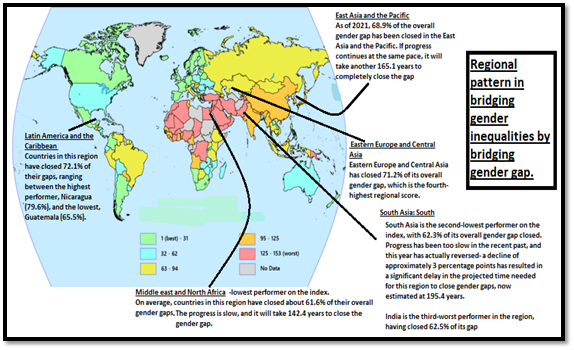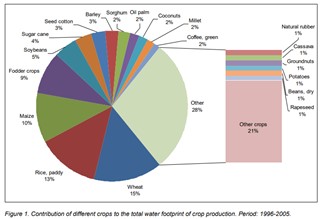04 Sep
Need for Sustainable Cities- Engines for Growth
- In news: Recently World Bank released new report – “Pancakes to Pyramids – City Form for Sustainable Growth”.
- Background:
- The World bank report analyzes the dynamic, two-way relationship between a city’s economic growth and the floor space available to residents and businesses.
- Over the last two-three decades, demographic and economic changes have propelled cities and urban centres to become the principal habitat of humankind. Cities are not only where rapid improvements in socio-economic and environmental conditions are possible, but it is, indeed, where such change is most needed. The cities of the world's emerging economies are increasingly drivers of global prosperity while the planet's resources are fast depleting.
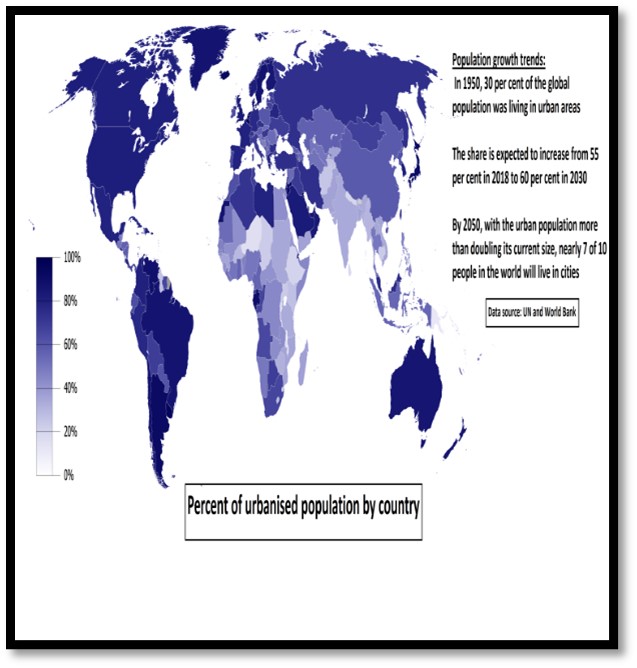
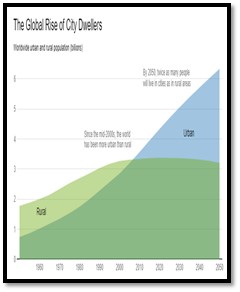
-
- It is, therefore, more critical than ever that Member States and United Nations agencies commit themselves to realize the goal of sustainable urbanization as a key lever for development.
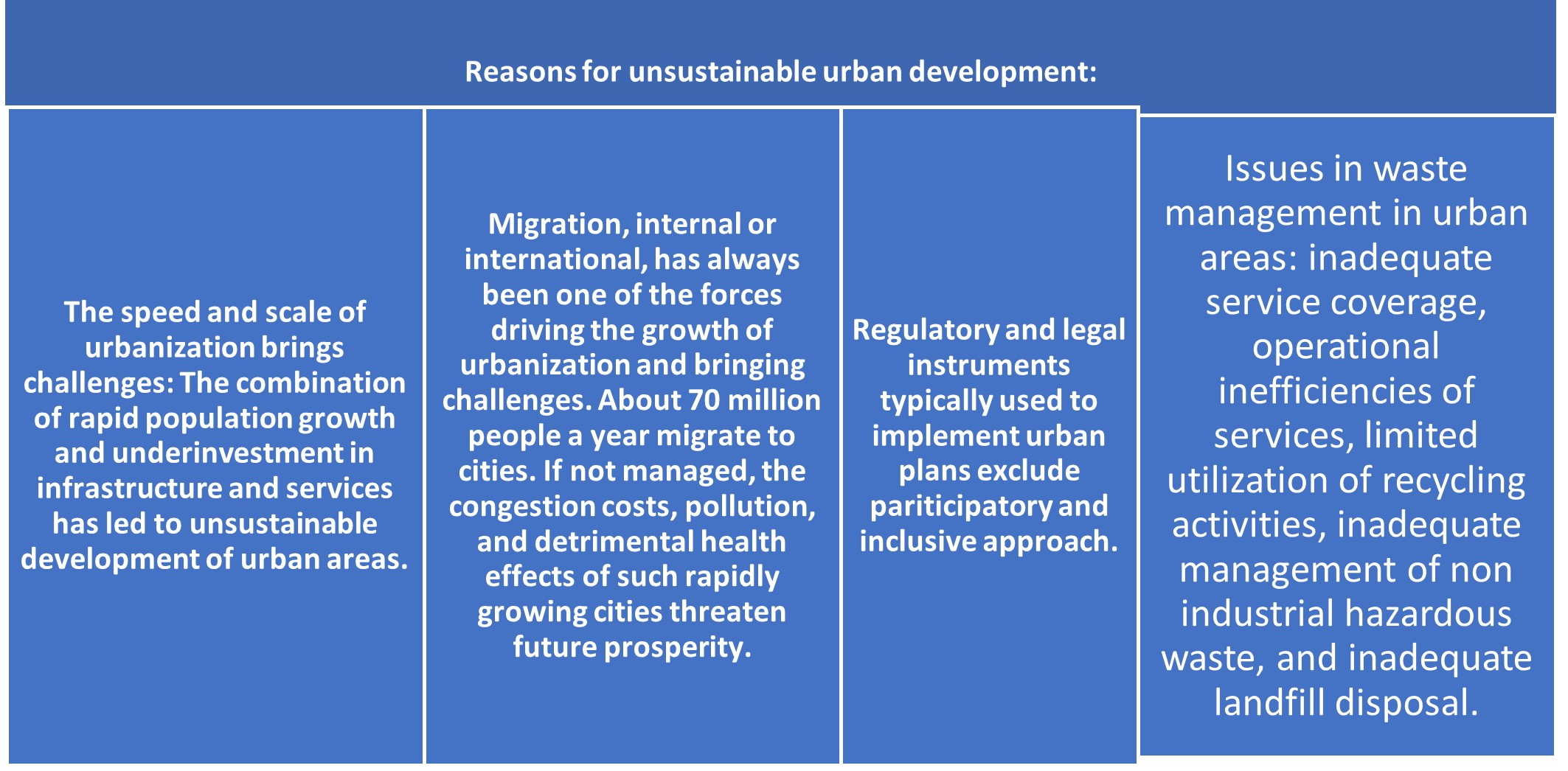
- Challenges faced by urban region due to unsustainable development:
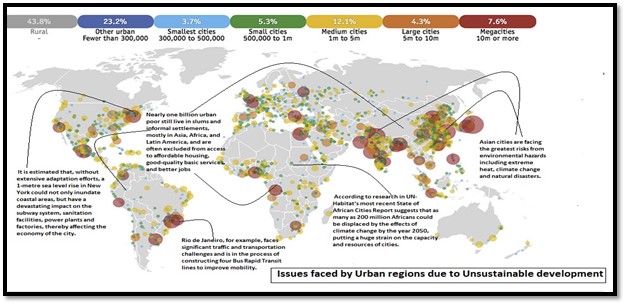
Morphological challenges:
- Urban sprawl - once a city is built, its physical form and land use patterns can be locked in for generations, leading to unsustainable sprawl, which puts pressure on land and natural resources, resulting in undesirable outcomes such as traffic congestion, with associated air pollution, noise and long commuting times affecting public health and productivity.
- Unsustainable land use pattern: for example rapid encroachment and decrease in agricultural lands upon rapid urbanization and industrialization, replacement and destruction of natural ecosystems like wetland and construction of pavements and concrete etc.
Demographic and social challenges:
- Overcrowding: Congestion in urban areas is consistent because of overpopulation and it increase day by day as more people from rural or undeveloped areas and immigrants move into cities and towns in search of a better life. This leads to unsustainable development of slums and shanty towns with inadequate basic services like transport, housing, waste, energy, and land use management.
- Inequality as the cause and manifestation of unsustainable urban development: seen in growth of gated communities and slum dwellings.
-
- Environmental challenges such as:

-
- Cities are also threatened due to epidemics. Pandemic like COVID-19 poses massive challenge for cities. The measures taken to control the spread of the virus are having massive implications on cities due to their economic structure, their preparedness for such a crisis and the extent to which their population’s health and livelihoods are vulnerable.
Case study: Rio de Janerio, Brazil: It is the second-most populous city in Brazil and the sixth-most populous in the America. Unsustainable urban development leads to following issues:
-
- Urban sprawl- this is an issue as the city continues to grow rapidly, encroaching on surrounding rural (countryside) areas.
- Growth of slums and shanty towns: In Rio de Janeiro, more than 2 million peoplelive in the favelas (slums) with shortage of hospitals and clinics and high levels of illness and disease.
- With the country undergoing rapid development, car ownership has grown and the central business district (CBD) is very congested with high levels of air pollution.
- Waste disposal- a particular problem in the favelas, where there is no organized sewage treatment or waste recovery systems. Annually, Rio de Janeiro generates approximately 5 million metric tons of waste and only 1.9% of it is recycled.

- Why do we need sustainable urban developent:
- Sustainable growth for Cities (economic growth engine): According to Lewis Mumford, the physical design of cities and their economic functions are secondary to their relationship to the natural environment. Therefore for sustained economic growth, environmental sustainability of the region must be taken care of.

-
- Sustainable urban development is the way for cities to mitigate climate change, Integrate urban places designed to bring people, activities, buildings, and public spaces together, with easy walking and cycling connection between them and near-excellent transit service to the rest of the city.
- Sustainable development ensures that cities are healthy, providing housing and employment opportunities to growing urban population, and simultaneously meeting the environmental standards.
- Strategies for sustainable urban development:
- Urban planning dimension: sustainable solutions include green buildings and housing, mixed-use developments, walk-ability, greenways and open spaces, alternative energy sources such as solar and wind etc.
- Promote Territorial and Spatial Development: identifying priorities of lagging regions, connecting urban and rural spaces, decongestion strategies and addressing spatial inequalities within cities to allow faster economic growth. For example: Development of conurbations, satellite towns to decongest bigger cities- Prominent satellite cities near Delhi are Gurgaon, Noida, Ghaziabad and Faridabad.
- Urban planning dimension: sustainable solutions include green buildings and housing, mixed-use developments, walk-ability, greenways and open spaces, alternative energy sources such as solar and wind etc.
-
- Ensuring environmental sustainability:
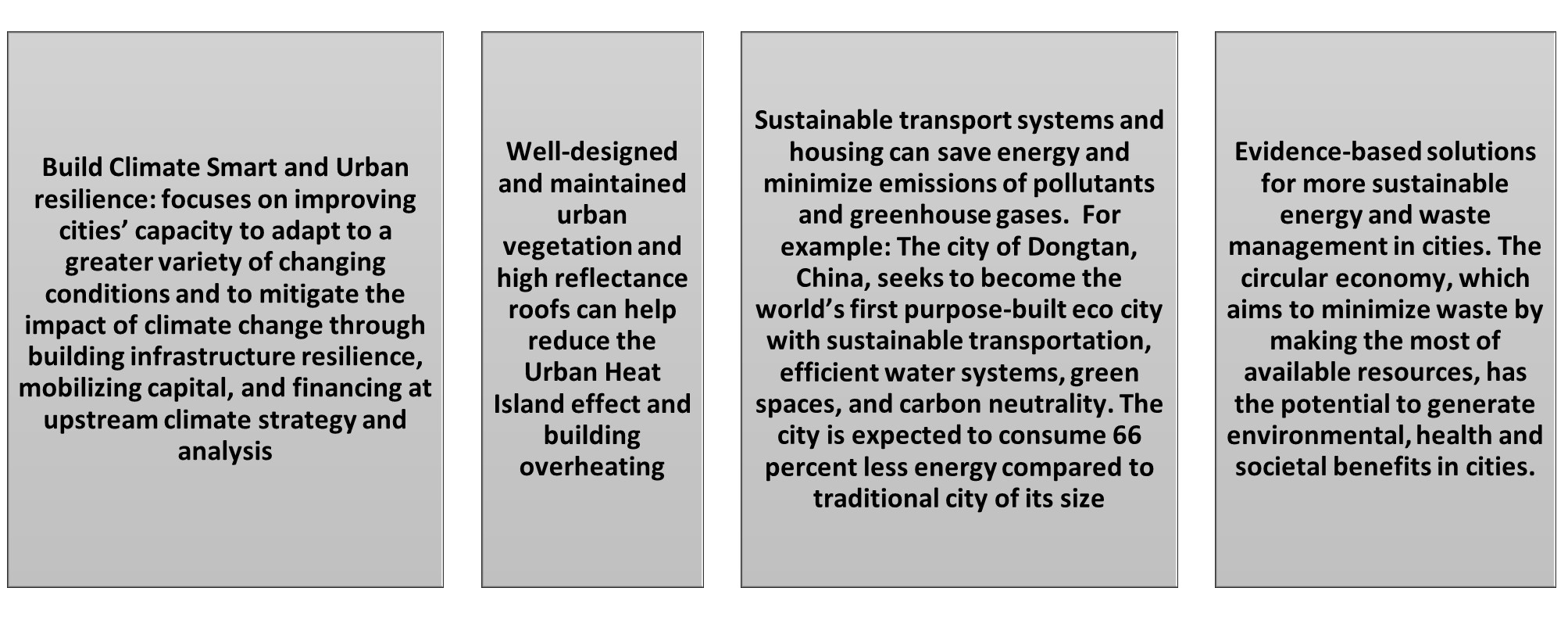
-
- Smart sustainable solutions for urban development
- The concept of smart urbanism encompasses planning and operating cities in ways that foster efficiency, livability, and sustainability.
- Smart sustainable solutions for urban development
- Case study: San Francisco
- Sustainable City is a dedicated initiative to achieve the long-term sustainability of built and natural environment. It includes city-wide and neighborhood-scale efforts to address environmental sustainability categories: climate protection, energy, water, waste and materials management, air quality, ecology and resilience. Also adopted an ambitious climate action plan to outline the city’s goals that include:
- zero-waste city by 2020
- policy to ban natural gas in all new city buildings
- MUNI (San Francisco Municipal Railway) buses are hybrid and fully electric public transit system of the city, with a goal of an entirely electric fleet by 2035
- recently made one of its busiest streets, Market Street, car-free
- San Francisco is a leader in access to (and quality of) parks and green spaces-100% of San Francisco residents currently live within a 10 minute walk to a park
- Sustainable City is a dedicated initiative to achieve the long-term sustainability of built and natural environment. It includes city-wide and neighborhood-scale efforts to address environmental sustainability categories: climate protection, energy, water, waste and materials management, air quality, ecology and resilience. Also adopted an ambitious climate action plan to outline the city’s goals that include:
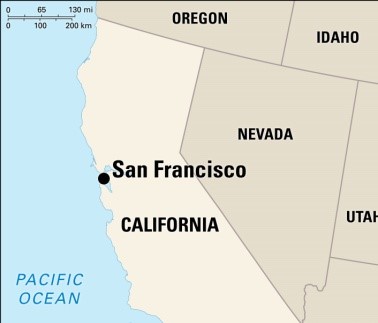
- Way forward:
- Adoption of the SDG 11 (which generally focuses on making cities and human settlements inclusive, safe, resilient and sustainable) and SDG 15 which seeks to encourage and institute the protection, restoration, and promotion of sustainable use of terrestrial ecosystems.
- New Urban Agenda: is roadmap for building cities that can serve as engines of prosperity and centres of cultural and social well-being while protecting the environment. It provides guidance for achieving the Sustainable Development Goals and provides the underpinning for actions to address climate change.
- Inclusive development is an essential foundation for long-term sustainability, equity, shared prosperity, and civil society in cities.
- Where can we use it-
- Paper1- Settlement (urbanization), Regional planning (Growth centers\pole, Regional imbalances, Sustainable development).
- Paper2 -Settlement (urbanization), Regional development and Regional Planning.
Peatlands: Turning Carbon Sinks into Carbon Source
Why in news: According to recent studies, Peatlands are emerging to be among the most alarming sources to liberate atmospheric CO2 in a warming world.
What are Peatlands?
- Peatlands are a type of wetlands with a thick water-logged soil layer made up of dead & decaying plant material. The term ‘peatland’ refers to the peat soil and the wetland habitat growing on its surface.
- In these areas, year round water logged conditions slow the process of plant decomposition to such an extent that dead plants accumulate to form peat. Over millennia this material builds up and becomes several meters thick.
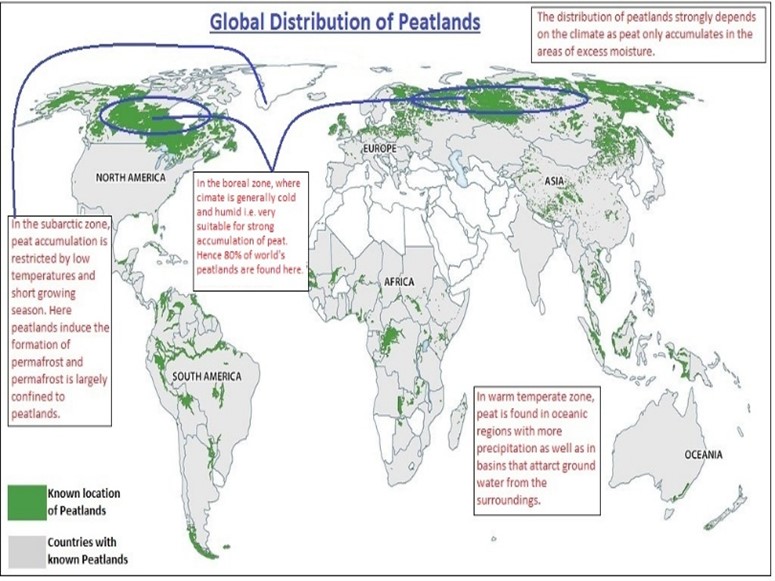
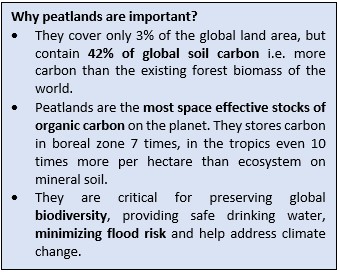
How the role of peatlands is changing from carbon sinks to carbon source?
- Conversion of peatlands, a source of GHG emissions: Peatlands are being drained for purposes such as agriculture and forestry. E.g. over the last decade, Indonesia approved palm oil plantations on nearly 15 million acres of peatlands. When peatlands are drained, oxygen enters the peat, breaks it down, then the well preserved carbon is released as GHG into the atmosphere. Conversion of peatlands is responsible for 6% of global anthropogenic CO2 emissions.

- Damaged peatlands, a source of GHG emissions: Peatlands are getting damaged due to several reasons such as massive anthropogenic wild fires, extraction of peat for human use etc. E.g. Fires in Indonesian peat swamp forests in 2015, emitted nearly 16 million tonnes of CO2 a day. In UK, extracting peat for use in gardening has caused peatlands to emit 16 million tonnes of carbon every year.
- Effect of climate change on peatlands: Climate change is playing an important role in turning peatlands into carbon sources in the following ways:
- Warmer soils and changing hydrological conditions due to climate change are leading to quicker organic matter decay and this may result in the release of the carbon stored in the peatland soils.
- Climate change induced thawing of permafrost in boreal and sub-arctic peatlands are quickly liberating large amounts of carbon from peatlands.
- As the temperatures and incidence of droughts are rising, drained peatlands are becoming more susceptible to wildfires, which can convert peatlands from net sinks of carbon into net sources of carbon.
- Source of methane: Slow decay of organic matter under less oxygen conditions in the water logged peatlands produces methane as a by-product, which is a more potent GHG than CO2. When this methane gets released into the atmosphere, it will have a net warming effect.
Global initiatives for the restoration and conservation of peatlands:
- Global peatlands initiative: It’s an initiative taken at the UNFCCC COP in Marrakech 2016, which aims to bring countries and parties together to save peatlands and thus prevent release of CO2 into the atmosphere.
- ASEAN Peatland Forest Project (APFP): It involves the implementation of a multi-stakeholder peatland management strategy in South-Asia to restore peatlands & reduce the rate of degradation and the risk of fire and haze.
- UN FAO has presented 10 strategic actions that can ensure peatlands contribute their full potential to global agreements such as the Paris agreement on climate change and SDGs. These include:
- Assessing the distribution and state of peatlands.
- Stimulating market-based mechanisms to support peatlands.
- Engaging and supporting local communities for the conservation of peatlands.
- Targeted financial support etc.
- A 2016 IUCN resolution ‘securing the future of global peatlands’ supports the FAO’s strategic actions and encourages their adoption within country-focused peatland programs.
Way forward:
- Peatlands are highly significant to our global efforts to combat climate change as well as wider SDGs.
- For the world to keep the global average temperature increase under 2⁰C, peatlands must gain our attention, locally and globally.
- Also peatland restoration projects have proven to be cost-effective compared to other available carbon reducing technologies such as afforestation, carbon capture and sequestration etc.
- Solutions such as rewetting of peatlands, designating peatlands as Ramsar sites, generating public awareness could help in restoring peatlands which is vital in our transition towards a low-carbon and circular economy.
Where it can be used?
This can be used in topics related to Paper 1(Climate Change, Environmental Degradation), Paper 2 (Changes in patterns of Land use, Sustainable development).
Sources:
Challenges of Sugar Industry in India
Why in News? -The government is about to fast-track an ethanol program that will divert as much as 6 million tons of sugar toward fuel production annually by 2025, according to the food ministry.
Sugar industry in India is based on sugarcane which is a heavy, low value, weight losing and perishable raw material. At present, this is the second largest agro-based industry of India after cotton textile industry.
Problems of Sugar Industry
- Low Yield of Sugarcane -The yield per hectare is extremely low as compared to some of the major sugarcane producing countries of the world. This leads to low overall production and results in short supply of sugarcane to sugar mills. Lack of fertilizers, uncertain weather conditions, inadequate irrigation, poor varieties of cane, small and fragmented holdings and backward methods of cultivation are some of the major causes of low yields in India.
- Short crushing season - Manufacturing of sugar is a seasonal phenomenon with a short crushing season varying normally from 4 to 7 months in a year. The mills and its workers remain idle during the remaining period of the year, thus creating financial problems for the industry as a whole.
- Fluctuating Production Trends -Sugarcane has to compete with several other food and cash crops like cotton, oil, seeds etc.
- High cost of Production High cost of sugarcane, inefficient technology, uneconomic process of production and heavy excise duty result in high cost of manufacturing.
- Regional imbalances in distribution over half of sugar mills are located in Maharashtra and Uttar Pradesh and about 60 per cent of the production comes from these two states. On the other hand, there are several states in the north-east, Jammu and Kashmir and Orissa where there is no appreciable growth of this industry. This leads to regional imbalances which have their own implications.
- Unpaid dues to farmers: Due to increased sugar production across the country, sugar prices are reduced so much that the sugar mills are finding it difficult to pay dues to farmers.
- Limiting factor for Mills is proximity to raw material. So sugar mills are located in 30-50 kms radius of sugar-cultivating areas.(Weber model)
- Sugarcane is a long duration crop and requires 10 to 15 and even 18 months to mature, depending upon the geographical conditions; thus doesn’t suit all agro-climatic conditions.
- It is a labour intensive cultivation requiring ample human hands at every stage.
- Sugar mills produce wastewater, emissions and solid waste that impact the environment. The massive quantities of plant matter and sludge washed from mills decompose in freshwater bodies, absorbing all the available oxygen and leading to massive fish kills.
- Regional imbalances in distribution- sugar industry is shifting from Northern to Southern India because Peninsular India has tropical climate which gives higher yield per unit area as compared to north India.The sucrose content is also higher in tropical variety of sugarcane in the south.The crushing season is also much longer in the south than in the north.
- FRP vs SAP- The central government declares a min price of sugarcane that called Fair Remunerative Price (FRP) and stateGovernments have also right to declare their own price which is called State Advisory Price (SAP).
Generally SAP is more than FRP which pose the conflict that which is fair price for both farmers and mills.
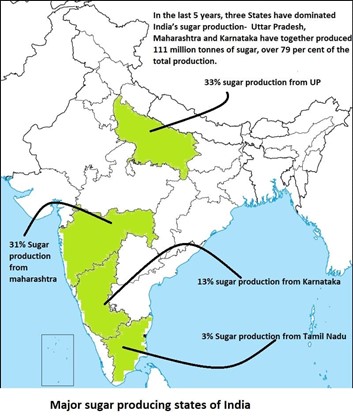
Case study: Marathwada, Maharashtra
About 4% of farmed land in Maharashtra is under sugarcane, but it consumes 71.5% of irrigated water, including wells. The state is the second-highest producer of sugarcane after UP, but 79% of this is grown in droughtprone regions like marathwada and vidharbha.
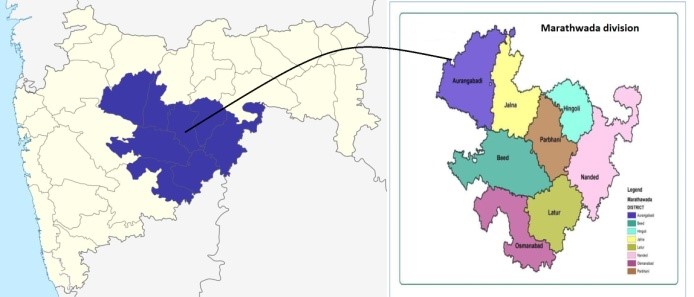
Solutions –
- Efforts are being made to solve this problem through the introduction of high yielding, early maturing, frost resistant and high sucrose content varieties of sugarcane as well as by controlling diseases and pests.
- Government Initiatives: Ethanol Blended Petrol Programme (EBP Programme), Scheme for Extending Financial Assistance to Sugar Undertakings (SEFASU), Soft Loan to Sugar Mills.
- Minimum Indicative Export Quotas, provide subsidies on new technology and equipment to both mill owners and farmers.
- Intense research is required to increase the sugarcane production in the agricultural field and to introduce new technology of production efficiency in the sugar mills.
- Where can we use it
- Geography Optional
- P1: Economic Geo (Agriculture), Regional.
- P2: Physical setting (Droughts), Resources (Land, water), Agriculture (Agro-climatic planning and regionalisation), Regional Development and planning (Desert, Drought prone area planning), Contemporary (Desertification and soil erosion).
- GS: GS1(Geophysical phenomena-desertification)
Sources:
- https://www.yourarticlelibrary.com/industries/sugar-industry-in-india-growth-problems-and-distribution/14144
- https://journalsofindia.com/sugarcane-mills-and-their-problems/
- https://www.thehindubusinessline.com/economy/agri-business/challenges-opportunities-in-sugarcane-sector-post-covid/article31950754.ece
- http://data.conferenceworld.in/ICSTM7/61.pdf
- https://iopscience.iop.org/article/10.1088/1748-9326/ab9925
Sudden Stratospheric Warmings (SSW)
Sudden stratospheric warmings (SSWs) are stratospheric weather events associated with anomalously high temperatures in the Stratosphere persisting from days to weeks.
How does it occur?
- Strong westerly winds circle the pole high up in the stratosphere every year in winter, which is called as the stratospheric polar vortex.
- It circulates cold air high over the Arctic. Due to temporarily weaken polar vortex or reverse flow of wind from east to west, the cold air descends very rapidly in the polar vortex. This causes the temperature in the stratosphere to rise very rapidly, which is called as SSW.
- As the cold air from the stratosphere sinks into the troposphere, it changes in the jet stream that causes the weather to change.
- SSW is often followed by very cold weather and heavy snowstorms.
- The effect is most pronounced in the regions of Northern Europe and Northern America. Southern India received excessively heavy rainfall (10 times the normal) in January 2021.

Figure 1: Normal scenario vs. that of a sudden stratospheric warming event
Prospects of studying SSW:
- Helps in a better understanding of whole-atmosphere coupling processes. Thus a practical opportunity to improve both atmospheric and space weather forecasting.
- Information gained from the study of coupling between Earth’s atmospheric layers is potentially applicable to atmospheres of other planets.
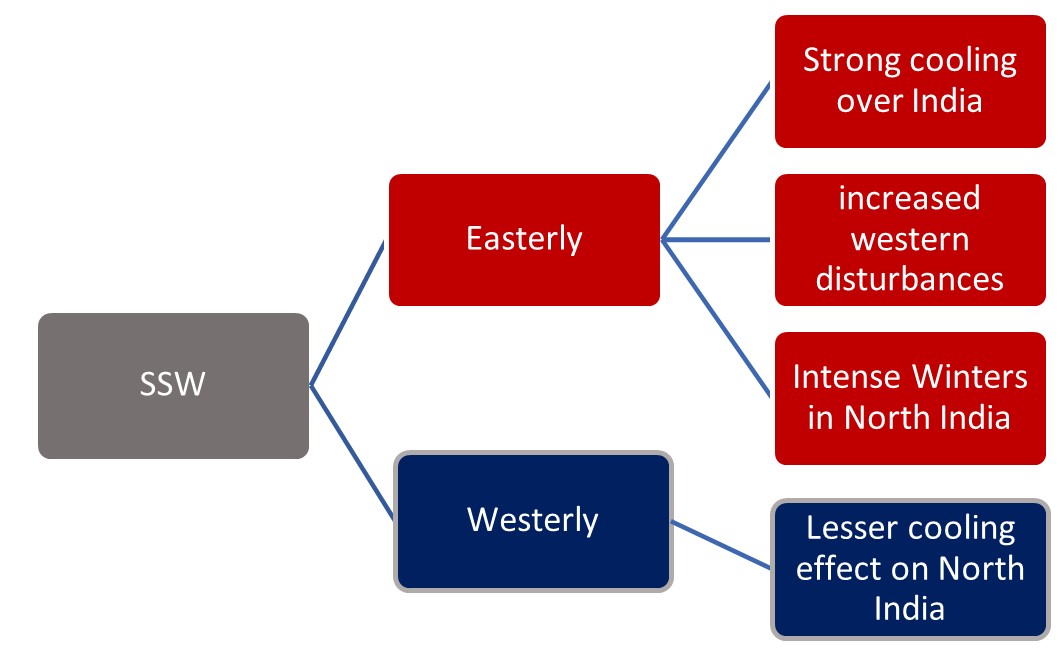
Figure 2: Effect of SSW and its impact on India
Source:
Marine Heat Waves
About: When the ocean temperatures gets extremely warm for an extended period of time which has significant impact on marine ecosystems and industries, they are termed as marine heatwaves. It can occur during summer or winter and are defined based on differences with expected temperatures for the location and time of year.
What causes marine heat waves?
- Ocean currents build up areas of warm water.
- Air-sea heat flux warming of the ocean surface from the atmosphere.
- Winds enhances or suppresses the warming of the waves.
- Climatic factors like El Niño changes the likelihood of events occurring in certain regions.
- Global warming increases the occurrence of it by 10%.

Marine Waves across ocean
Impacts:
- Changes in the habitat ranges of certain species
- Affects the ecosystem structure as it intervenes into the structure of the food chain
- Causes economic losses by impacting fisheries and aquaculture
- Biodiversity such as coral reefs gets drastically affected by marine heatwaves
Why in news: Australian scientists have predicted world-first marine heatwave predictions with a lead of 5 months.
Source:
- Marine Heatwaves Explained
- So what are marine heat waves
- Marine heat waves may become more intense, frequent: study
- Marine Heatwave News
Image Source:
Intraplate Earthquakes
- Intraplate earthquakes alias mid-plate earthquakes refers to a variety of earthquakes that occur within the interior of a tectonic plate.
- These are different from conventional or interplate earthquakes which occur at the boundary of a tectonic plate due to repeated accumulation and release of strain at the contacts between moving plates.
- Features: They often occur at the location of ancient fault zones in the stable interior of tectonic plates. They can occur in both continental and oceanic plates. These are relatively rare and less destructive as compared to the interplate earthquakes, but some of them can inflict heavy damage. Compared to interplate earthquakes, these are not well understood.
- Causes: Several causes were attributed to Intraplate earthquakes such as reactivation of ancient fault zones, glacio-isostatic adjustments, weakening of mantle due to rifting or arrival of a plume, large scale mantle convection
- Examples: Gujarat earthquake in 2001, the 2012 Indian Ocean earthquake, 2021 South Sandwich Islands earthquakes, a few days back an Intraplate earthquake occurred in Bay of Bengal which sent mild tremors up till Chennai and parts of Tamil Nadu.
- These are sometimes confused with But Cryoseisms are a type of non-tectonic seismic events occur in the glacial cryosphere.
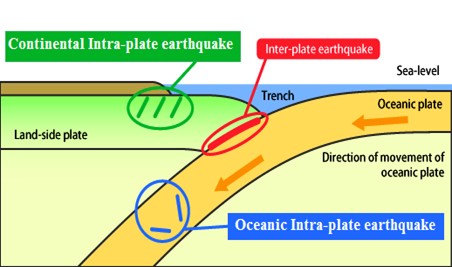
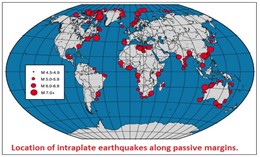
Sources:
- Intraplate earthquakes
- Mild tremors in Chennai and parts of Tamil Nadu
- Understanding Intraplate earthquakes
Image Sources:
Cloudburst Management Plan: Copenhagen
Challenges faced by Copenhagen:
- Copenhagen has experienced four major cloudburst events in the past decade. The largest in 2011, which led to severe flooding in the city and caused severe damage to the tune of 1 billion USD.
- According to the IPCC projections, Copenhagen will witness higher incidences of cloudbursts in the future, the intensity of heavy rainfall could rise by 20-50% and subsequent flooding as a result of climate change.
Measures taken by Copenhagen to combat the impacts of cloudbursts:
Copenhagen developed a cloudburst management plan in 2012, which is an offshoot of the Copenhagen climate adaption plan which outlines the priorities and measures recommended for climate adaptation.
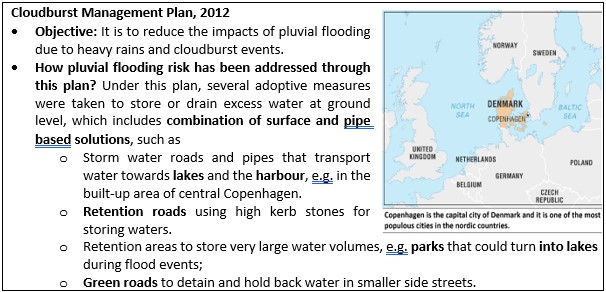
Outcomes of Cloudburst Management Plan of Copenhagen:
- Reduced flood risk and less damage occurred due to flood events as compared to the 2011 floods.
- Combination of surface and pipe based solutions has been proved as a highly cost effective measure than the traditional sewerage systems to address the pluvial flood risk.
- This plan also contributed to a growth in property values, increased employment, upgrade of urban spaces and increased tax revenues.
- It also contributed to sustainable urban development which is part of the Copenhagen’s vision to become carbon neutral by 2025.
This can be replicated for Indian cities, especially over central India, north-eastern India and the northern parts of the Western Ghats which are the potential breeding zones of cloudburst to mini cloudburst events, according to IPCC’s AR6.
Where this case study can be used?
This case study can be used in topics related to Paper 1 (Climate change, Problems of urbanization, Sustainable development of cities), Paper 2 (Problems of urbanization and remedies, Sustainable development).
Source:
Bhindawas Wildlife Sanctuary
|
Bhindawas Wildlife Sanctuary:
|
|
Dzukou Valley:
|
|
Dima Hasao:
|
|
Melgaht Tiger Reserve:
|
|
Mousuni Island:
|

Share the article
Get Latest Updates on Offers, Event dates, and free Mentorship sessions.

Get in touch with our Expert Academic Counsellors 👋
FAQs
Geography Current Affairs focuses on the contemporary issues, events, and developments in the field of geography. It covers recent geographical phenomena, environmental changes, geopolitical shifts, and related news. This differs from regular geography studies which may focus more on foundational concepts, historical contexts, and theoretical frameworks.
Updates are provided regularly to ensure that subscribers stay informed about the latest developments in geography. Typically, updates are provided on a fortnightly basis, depending on the frequency of significant events and changes in the field.
Absolutely. Geography Current Affairs serves as a valuable resource not only for Geography optional but also for GS papers, especially GS Paper 1 (covering Indian Heritage and Culture, History, and Geography of the World and Society) and GS Paper 3 (covering Technology, Economic Development, Biodiversity, Environment, Security, and Disaster Management). It aids in building a holistic understanding of various topics and strengthens answer-writing skills by incorporating contemporary examples and perspectives.
Geography Current Affairs holds immense importance for UPSC preparation, particularly for aspirants opting for Geography optional. It helps candidates stay updated with the latest developments, geographical phenomena, environmental issues, and geopolitical shifts worldwide, aligning them with the dynamic nature of the subject as tested in the UPSC examinations.

